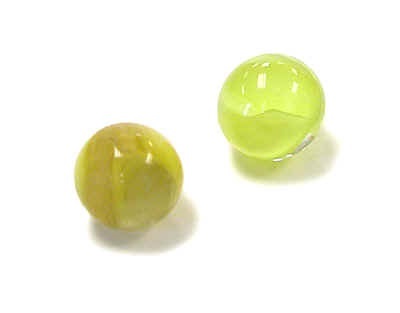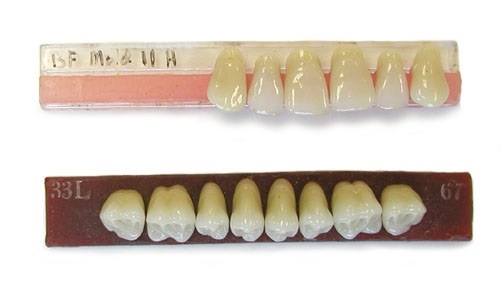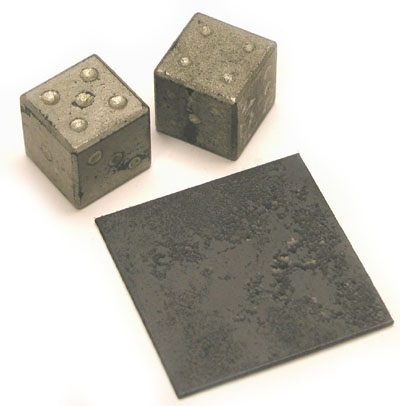
Many household items and other common objects made during the 1950s and 1960s contained uranium. During this time period, the government was encouraging members of the public to hunt for uranium. The federal governments Atomic Energy Commission (AEC) sponsored the search and advertised fixed rates for uranium ore to go along with bonuses for new discoveries. As a result, you could find any number of household items that contained traces of uranium. Much research has been done since then on the effects of uranium exposure and radiation to the human body, and the health effects of exposure to these traces of uranium have been minimal to non-existent.
Paul Frame, retired ORAU Health Physicist and former director of ORAU’s Professional Training Programs, has collected many uranium-containing items for ORAU’s Museum of Radiation and Radioactivity. Let’s take a deeper look at four items that contain uranium in the museum’s collection:
1. Uranium dentures

Porcelain dentures were popular for a long time. While modern dentures are primarily made from acrylic plastic, porcelain dentures are still produced and used today. Beginning in the 1940s, manufacturers began adding uranium to the porcelain powder. This process continued until 1986. One of the reasons that the use of uranium in dentures was so popular was that the element mimicked the look of real teeth in artificial light conditions, especially in the ultraviolet rays under fluorescent lights. While it is not known why the switch away from uranium was made, the hazard to the user was practically nonexistent.
2. Uranium marbles
Uranium marbles were a big hit among kids in the 1950s and 1960s and could be found in many a backyard. If you have ever come across the classic cat eye marbles, you may be shocked to know that these contained small traces of uranium. Uranium is what caused the splash of yellow in the middle that made the marble look like a cat’s eye. The amount of uranium in the marbles is so low it can only be detected using a black light, under which the uranium would give off a fluorescent glow. The risk of exposure to the uranium inside the marbles was higher at the manufacturing end than at the user’s end. In other words, the risk of exposure for those holding or playing with the marbles was nearly non-existent. Be sure to check out some of the other atomic toys that are located at ORAU’s Museum of Radiation and Radioactivity.
3. Uranium dice

The uranium dice at ORAU’s Museum of Radiation and Radioactivity were not sold commercially, but they are fascinating and have a bit of an unknown backstory. It’s not known who created the uranium dice, but they were not created for playing purposes. The weight of depleted uranium made the dice fairly heavy, and they were likely used as some type of paperweight or memento. The dice were probably created in the 1950s, and Frame believes (or has heard suggestions that) the dice were created as a memento by someone with the Atomic Energy Commission who had excess uranium, which was prevalent in Oak Ridge, Tenn., during and after the Manhattan Project.
4. Uranium pencil
Produced by the Kingston Pencil Company in Chattanooga, Tenn., the uranium-containing pencil is one of the intriguing items in the museum’s collection. In 1957, the pencil company received a license from the Atomic Energy Commission authorizing them to possess up to 24 tons of uranium ore. Each pencil had a plastic container at one end that contained a small sample of unenriched uranium ore. Uranium ore is weakly radioactive. For reference, each pencil contained between 1.5 to 2.5 grams of uranium ore. These pencils were popular in the 1950s, and they were often used as promotional items to advertise various companies, including a fast-food chicken company.
For more information about these and other items in ORAU’s Museum of Radiation and Radioactivity, visit the virtual museum directory.